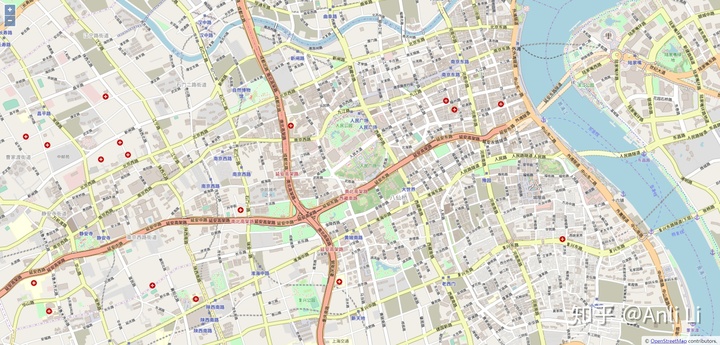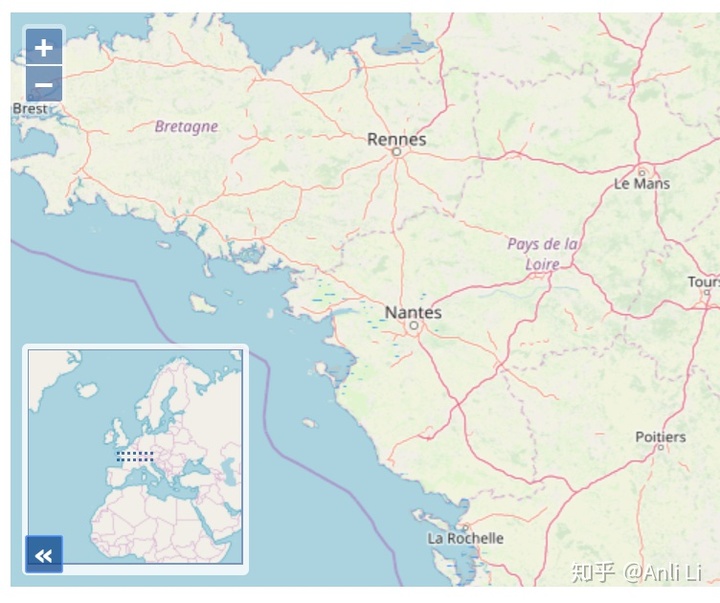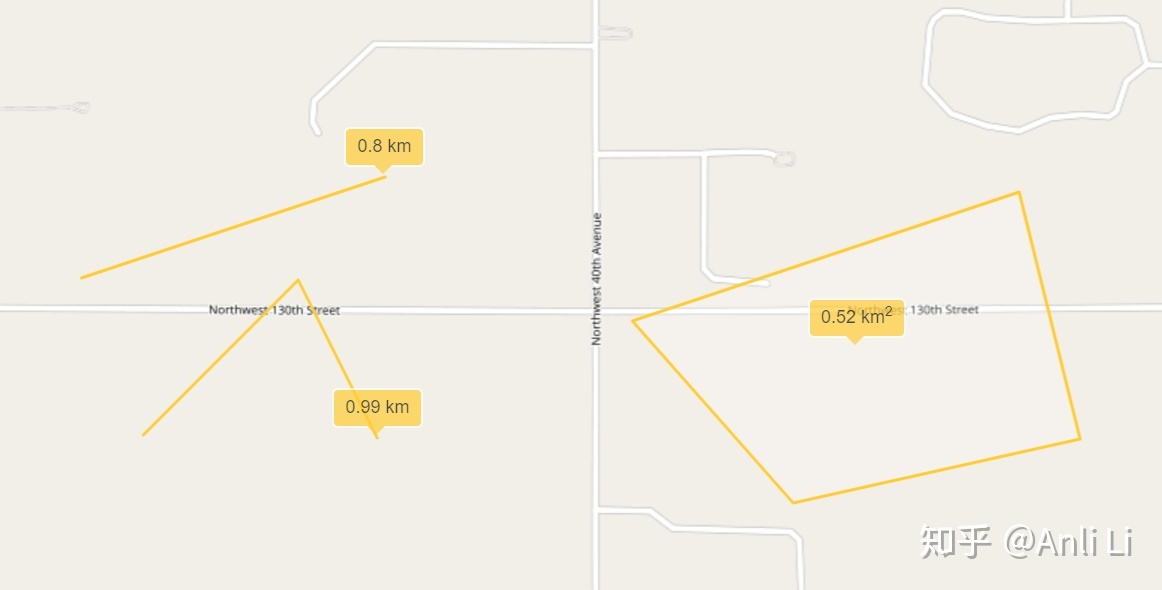简介
Web开发有一个专门的方向就是Web GIS,而Openlayers库就是Web GIS里的一个翘楚,想要开源的Web GIS的JavaScript库几乎就没有别的选择。
OpenLayers的官网是
OpenLayers - Welcomeopenlayers.org目前最新的版本是5.3.x。它的github地址是
openlayers/openlayersgithub.com
看看官网上的一句话介绍——A high-performance, feature-packed library for all your mapping needs.,如果看不出什么来(微言而不大义),那就再看看详细的介绍和特性
OpenLayers makes it easy to put a dynamic map in any web page. It can display map tiles, vector data and markers loaded from any source. OpenLayers has been developed to further the use of geographic information of all kinds. It is completely free, Open Source JavaScript, released under the 2-clause BSD License (also known as the FreeBSD).
- Tiled Layers
- Vector Layers
- Cutting Edge, Fast & Mobile Ready
- Easy to Customize and Extend
总结出来几个特点是
- 做地图的
- 能支持不同的层类型,比如瓦片、矢量等
- 能支持移动设备了
- 方便定制和扩展
- Licence也不让你有后顾之忧
要强调的是OpenLayers仅仅是Web GIS的前端,不包含后端,而整个前后端的Web GIS的解决方案可以参考Arc GIS。有的场景下,比如数据量特别大,假设有10000个标记,那么不适合把数据传送到前端在前端渲染,而是在后端制图,在地图移动、缩放的时候把当前范围内的标记通过图像的方式传递到前端展现。
另一个混淆的概念是LBS应用,比如百度地图API、高德地图API等,这种适用于通用型的应用,而对于特别专业化的应用解决方案,比如电信业、交通业就不适合了,它们是不需要展现周围有什么公交站和电影院的 : )。
Hello World
新建目录,然后npm init -y初始化一下,修改package.json。
{"name": "openlayers","version": "1.0.0","description": "","main": "index.js","scripts": {"start": "webpack-dev-server --open"},"keywords": [],"author": "","license": "ISC","dependencies": {"ol": "^5.3.3"},"devDependencies": {"html-webpack-plugin": "^3.2.0","webpack": "^4.39.1","webpack-cli": "^3.3.6","webpack-dev-server": "^3.7.2"}
}新建webpack.config.js文件,以下几乎是最小化的配置了
const path = require("path");
const webpack = require("webpack");
const HtmlWebpackPlugin = require("html-webpack-plugin");module.exports = {mode: "development",entry: {app: "./src/index.js"},devtool: "inline-source-map",devServer: {//静态资源放这个目录下,不然会找不到contentBase: "./dist",hot: true},plugins: [new HtmlWebpackPlugin({template: "./dist/index.html"}),new webpack.HotModuleReplacementPlugin()],output: {filename: "[name].bundle.js",path: path.resolve(__dirname, "dist")}
};
入口的html.js文件
<!DOCTYPE html>
<html><head><meta charset="utf-8" /><title>Hello Openlayers</title><link rel="stylesheet" href="./ol.css" /><style>html,body {margin: 0;height: 100%;}#map {position: absolute;top: 0;bottom: 0;width: 100%;}</style></head><body><div id="map"></div></body>
</html>入口的index.js文件
import { Map, View } from "ol";
import TileLayer from "ol/layer/Tile";
import OSM from "ol/source/OSM";
import { fromLonLat } from "ol/proj";
new Map({target: "map",layers: [new TileLayer({source: new OSM()})],view: new View({center: fromLonLat([121.47, 31.23]),zoom: 15})
});

不需要几行代码就搭建出了一个地图,这里加载的是OpenStreetMap,没有版权、费用的困扰。
基础概念
OpenLayers里有几个重要的概念,理清它们后有助于我们开发。
Map
Map就是地图,它是一个抽象的概念。Map上可以关联多个Layer或者一个View。它的定义在ol/Map下。
Layer
Layer表示一个图层。OpenLayers的名字里就带有Layer,表示最终它的展现效果是通过一层层的Layer来显示出来的,比如你可以在底部显示基础的地图,然后在地图的上方显示一些标记、线路、提示等效果。
它的定义在ol/layer下,有如下四种基础的Layer,前两种属于栅格,后两种属于矢量。
ol/layer/Tile- 渲染瓦片图片,就是那种将整个地图分解为一张张图片最后拼起来的ol/layer/Image- 渲染图像ol/layer/Vector- 渲染矢量数据ol/layer/VectorTile- 渲染矢量瓦片
Source
Source就是地图的来源,在OpenLayers里可以支持多种地图源,比如OpenStreetMap 、Bing、XYZ或者矢量的KML等。
Source是跟Layer关联的。它的定义在ol/source下。
View
View用来表示一组属性,比如中心点,缩放大小以及映射等。它的定义在ol/View下。
控件
在ol/control下已经定义了一些内置的控件,如果不满意,部分也是可以定制的。
大致有如下一些内置控件
- 全屏
- 鼠标经纬度
- 旋转
- 缩放
- 小地图(类似于打游戏时的那种小地图)

交互
交互事件定义在ol/interaction下,大致有如下一些交互事件
- DragRotate
- DoubleClickZoom
- DragPan
- PinchRotate
- PinchZoom
- KeyboardPan
- KeyboardZoom
- MouseWheelZoom
- DragZoom
下图是测距和测面积的交互实例

API和Demo
我觉得只要理清基础概念,那么查阅API就不会很困难,在线API地址是
OpenLayers v5.3.0 API - Indexopenlayers.org可以先浏览一遍Demo,目前大约有将近170个例子,浏览过后就可以对OpenLayers能做一些什么事情心里有数了,它的地址是
OpenLayers Examplesopenlayers.org








![[jQuery] 判断复选框checkbox是否选中checked](http://pic.xiahunao.cn/[jQuery] 判断复选框checkbox是否选中checked)









